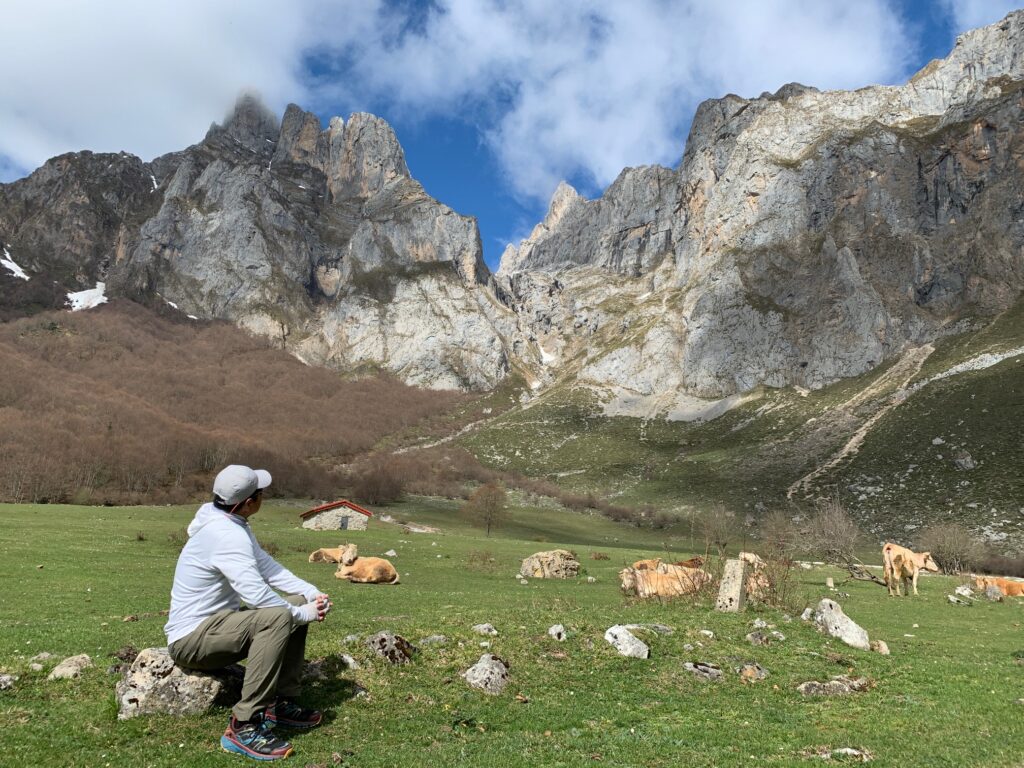The mountains at Puente Dé, Picos de Europa
Highlights
Picos de Europa is a mountain range within a national park in North Central Spain. It is located between the regions of Asturias, Cantabria and León. It reminds us of the alpine scenery in Austria and Switzerland.
Time of Visit: April 2023
Duration of Visit: Four Nights (should have stayed longer)
Description
Picos de Europa is a mountain region in north central Spain. It is relatively not well known to outsiders as the visitors are mostly domestic tourists. We really hope it stays that way so it is not spoiled by mass tourism (too late now).
We thought we were in Austria or Switzerland when we laid eyes on the mountain range. The peaks were white with snow while the slopes were verdant green pastures. Dairy cows roam freely and you can hear their bells as they move along to graze.
Quaint towns and villages dot this region of Spain. The charm of these quaint towns and villages add to the region’s beauty. Though there are roads that pass through these towns and villages, they are sparse and not well traveled giving the area a sense of remoteness and serenity. It is truly one of the few beautiful places we have been to that almost felt empty (of people).
We drove through the town of Riano to the park’s southwest on Highway N-621 to the town of Potes. Then we took Highway CA-185 until it ended at the hamlet of Puente Dé. Our next stop was Ponchebos which is at the park’s north side. Prior to leaving the area, we took a shuttle bus to Mirador Enterlagos at the park’s west side.
Scenic Highway N-621
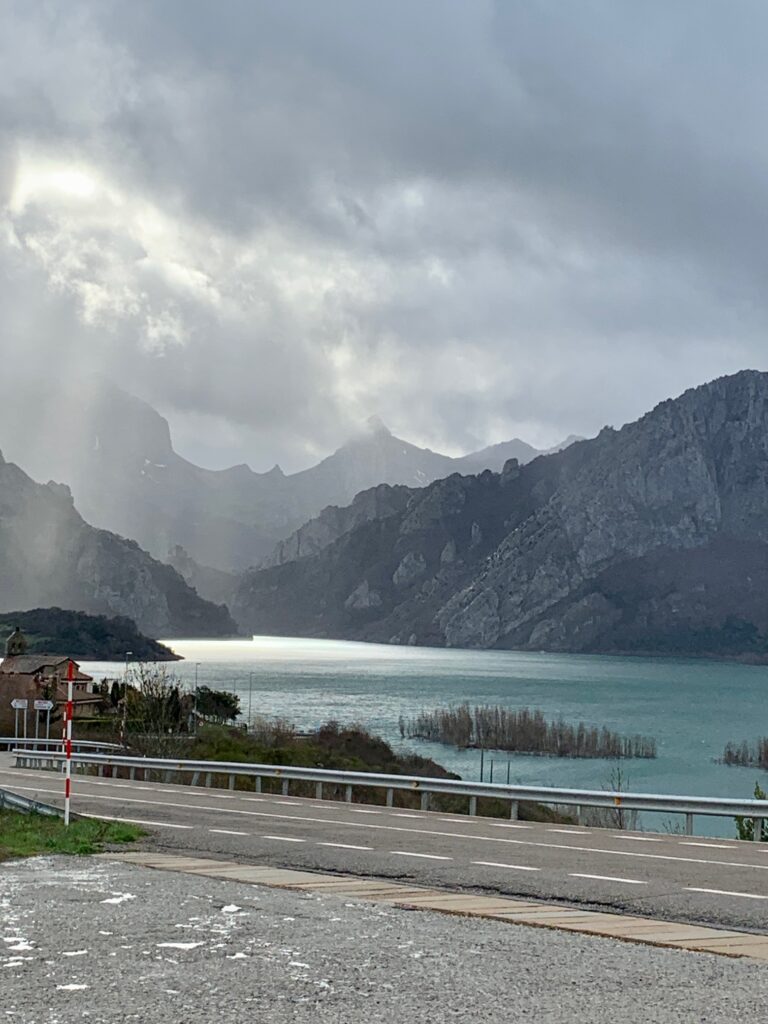

The receptionist at Parador de Fuente Dé suggested that we take Highway N-621 because we were coming from the west. We were glad that she made the suggestion as it is a beautiful stretch of highway. Unfortunately, we were not able to take photos along this stretch of highway due to time constraints.
From the town of Riaño and the teal colored Embalse (reservoir) de Riaño, the highway climbs in elevation up to the summit near the border between Cantabria and Castilla Y Leon. Then it gradually descends to the town of Potes.
There are superb views throughout the drive, though the road is winding and narrow in some places. There are also some pullouts for taking photos. Majestic mountains were all around that reminded us of the Dolomites in Northern Italy.
Early April was cold on this stretch of highway. We encountered blowing snow near the summit and freezing temperatures preventing us from taking photos.
Potes and the Camaleño Valley
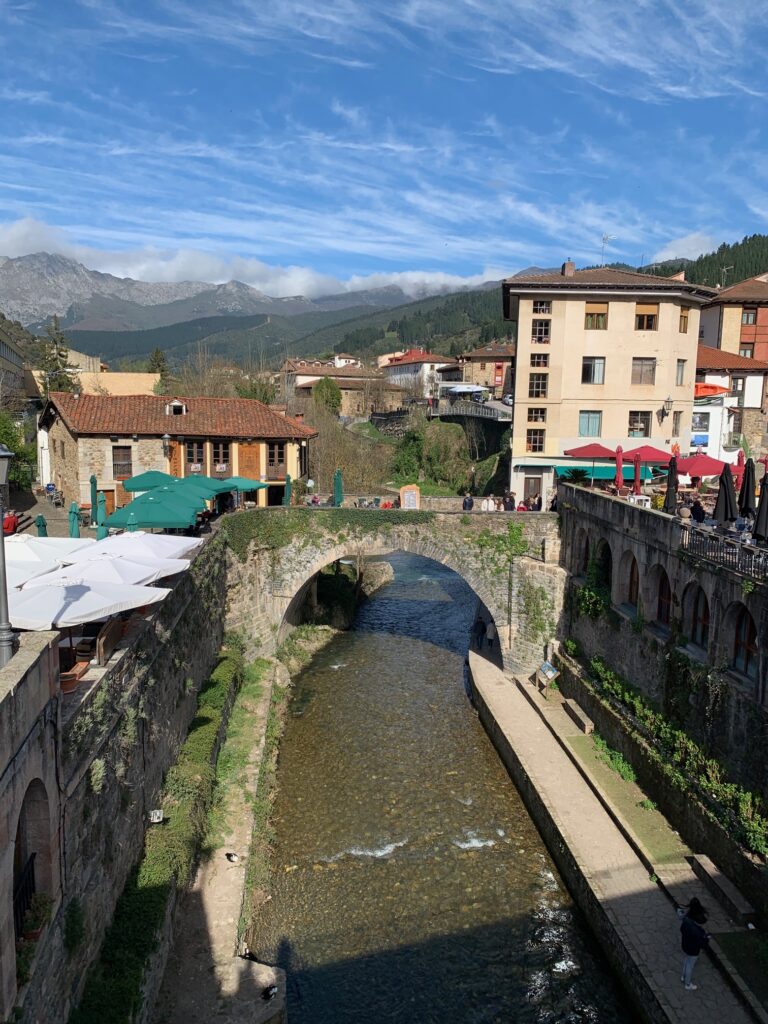

Potes is the gateway to the Camaleño Valley. It has a small town feel with lots of shops and restaurants. The town is surrounded by spectacular mountains. The rivers Rio Deva and Rio Quiviesa meet at the center of town where most of the commercial activities occur. Its streets, crossed by arched stone bridges, feature centuries-old buildings and monuments. It was such a pleasure to walk around this medieval looking community.
The Camaleño Valley is bisected by Highway CA-185. Along this highway are many villages and hamlets. Some by the road and some tucked into the mountains. We visited the Monasterio de Santo Toribio and Mogrovejo Village.
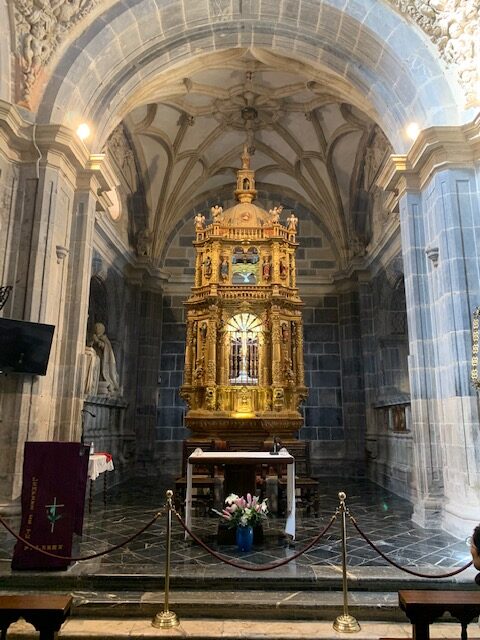

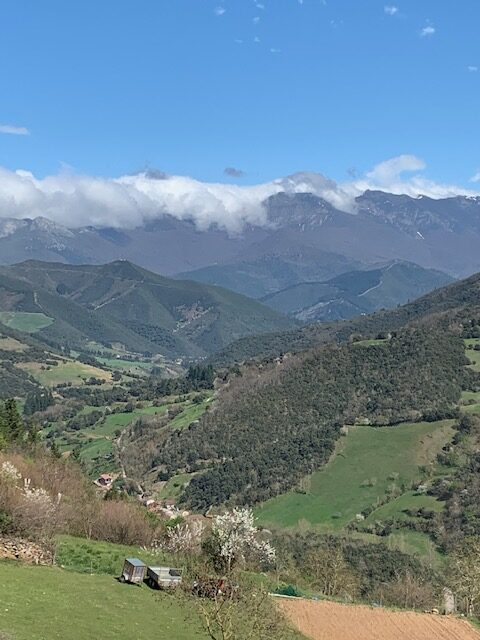

Monasterio de Santo Toribio is formally known as the Sanctuary of the Lignum Cross (The Holy Cross). This sanctuary is relatively unknown but holds a very important Christian relic. Within the sanctuary is the chapel of the Holy Cross. In this chapel there is a gold plated reliquary (container of holy relics) in the shape of a cross. The reliquary holds the largest piece of the true cross, i.e. the cross on which Jesus Christ was crucified. It has been kept in the monastery since the 8th century.
Also kept in the sanctuary is the recumbent statue of Santo Toribio de Astorga made of wood. Santo Toribio was a bishop who, as a young man, was in Jerusalem guarding the relics of Jesus Christ. He obtained permission from the Pope of the time to move the left arm of the Holy Cross to Astorga.
Mogrovejo is a beautiful small village nestled in the Picos de Europa mountains. It lies approximately one kilometer up a local road off Highway CA-185. The homes are made of stones and bricks. Most were built in the 16th to 18th centuries. The village being on the mountainside provides an outstanding view of the valley below and the mountains.
Puente Dé
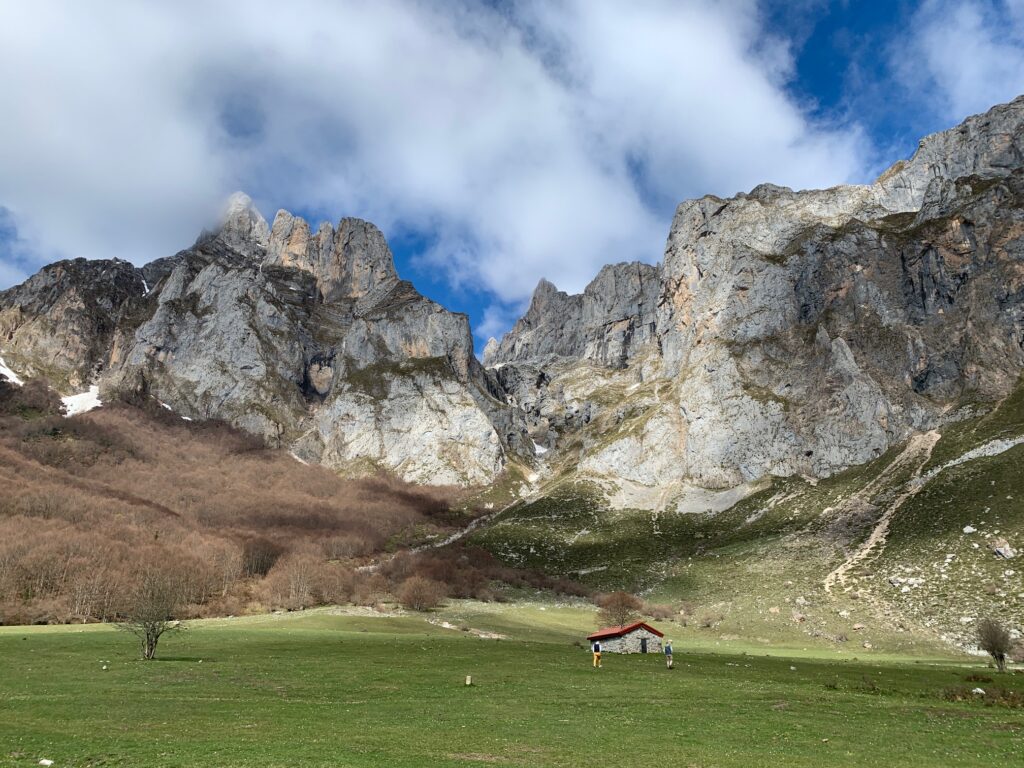

Highway CA-185 ends at Puente Dé where huge mountains ominously loom. The Parador Fuente Dé is a large timber framed hotel similar to the great lodges of Glacier, Yellowstone and Yosemite National Parks. It has a large lobby with comfortable chairs perfect for unwinding after a day of explorations.
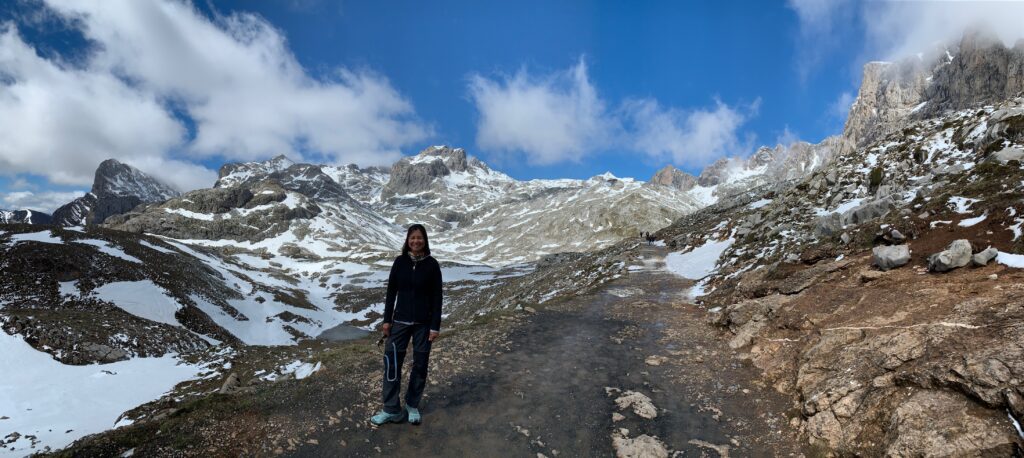

Within walking distance from the hotel is the Teleférico (cable car) Fuente Dé. The cable car whisks visitors up to El Portal de Picos to gain access to superb and scenic mountain hiking trails. If you think the views while driving Highway CA-185 was terrific, it gets even better when you reach the mountaintop at the end of the cable car ride. For those who rather just enjoy the scenery, the restaurant at the end of the teleférico provides astounding views in a relaxed atmosphere.
Poncebos
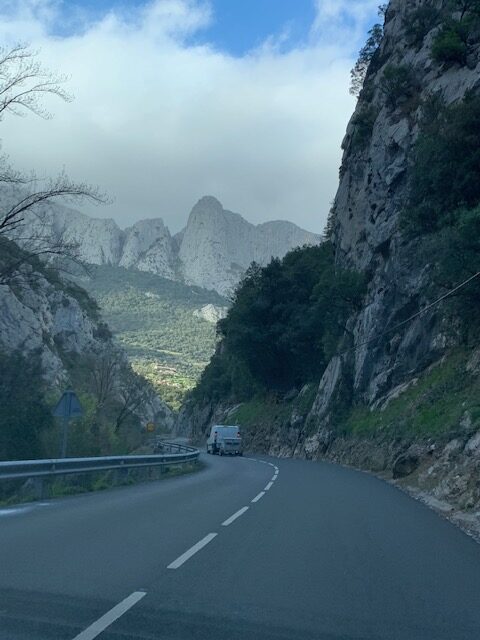

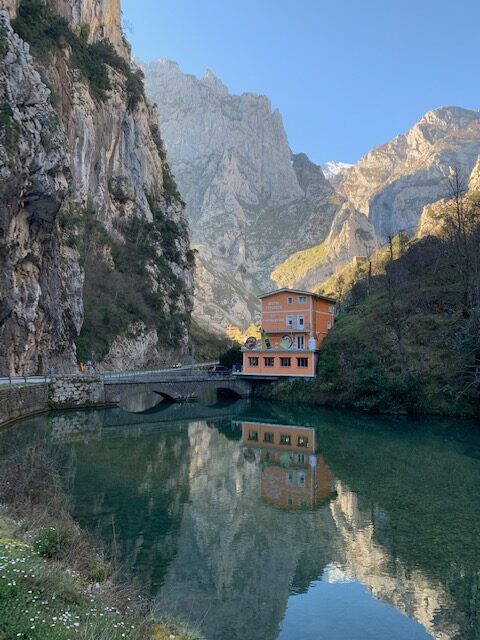

Poncebos is not a community but a destination within the heart of Picos de Europa. Fortunately, there is the Hostal Poncebos that offers rooms with private bathrooms. It also has a restaurant so it serves as a nice base for explorations as there are many hiking trails and hamlets close by.
We were just in awe while driving from Potes to Hostal Poncebos along Highway AS-114. The drive winds its way alongside the river that carved the canyon. We were close to the mountains that were towering above us and periodically found ourselves looking up on the vertical rock faces.
There are a few quaint villages along the drive too. There are also roads that go deeper into the mountains to other remote villages just waiting to be explored. It immediately hit us that we should have allotted more time in this part of Spain.
Las Arenas de Cabrales is the last village to get supplies before continuing on to Hostal Poncebos. It has a couple of decent sized grocery stores (mercados) and a pharmacy. There are also a few restaurants that offer menu del dias. We spent half a day in this quiet village just chilling.


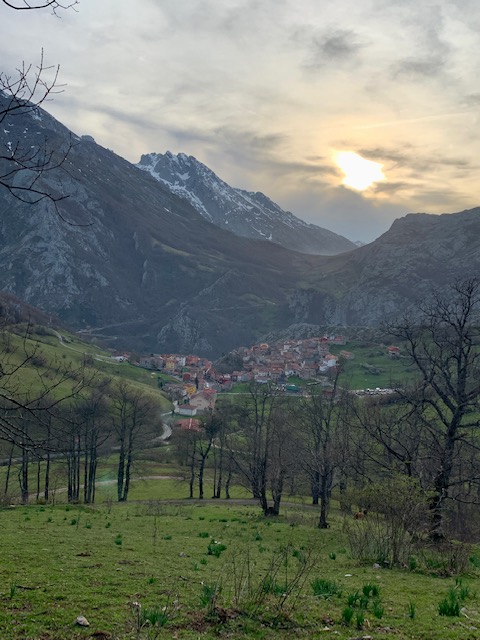

The hamlet of Camarmeña sits high up in the mountains not far from Hostal Poncebos. It is a steep drive to get to the village but the views are worth it. We were pleasantly surprised about the scenic drive on the way to the village of Sotres. The views were spectacular as it climbed in elevation and the road was almost empty. It felt really nice to have the area all to ourselves and not to be in any hurry. Unfortunately, we did not have enough time to explore the road past Sotres
Mirador Entre Lagos
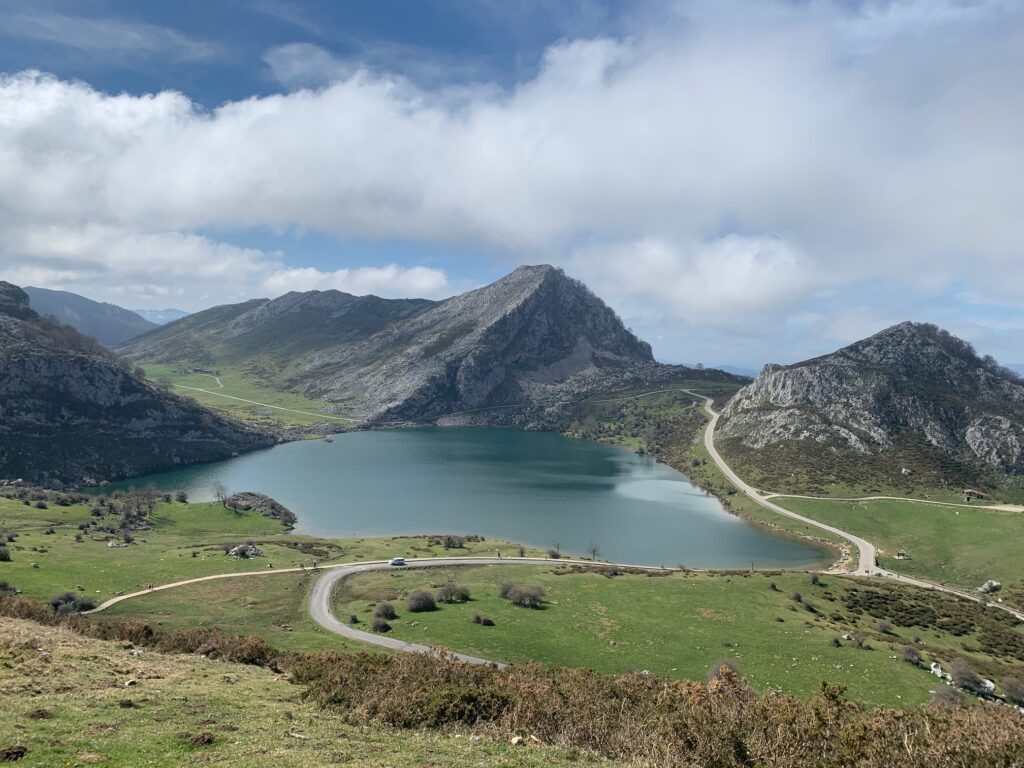

Mirador Entre Lagos or the viewpoint between lakes in an alpine area at the park’s western part. Being in an alpine area, it provides superb views of the valleys below and the snow capped mountain peaks that are higher in elevation. It is a popular day trip destination judging from the number of visitors that go there. But it did not feel crowded as this part of the park covers a large area such that there are plenty of places to walk to and venture out. Or you can just pick a stop and stare at the gorgeous views in front of you for hours.
The gateway to Mirador Entre Lagos is the town of Covadonga. Initially, we followed Google Maps’ direction to get to Mirador Entre Lagos from Hostal Ponches. It took us through alpine villages and pastures that looked similar to Switzerland and Austria only to end up at a road that indicated it was only for farmers and authorized users. Fortunately, a local told us to head on over to the town of Covadonga where we could catch a shuttle bus to Mirador Entre Lagos.
Before reaching the town of Covadonga, we saw signs on the road at parking areas that indicated it sold tickets to Lagos de Covadonga. The shuttle bus tickets cost 9 Euros pp at the time and was well worth it as well as a necessity. It was worth it because the drive to Mirador Entre Lagos goes up in elevation, is narrow in some places and has many twists and turns on the side of the mountain. Taking the shuttle bus was a necessity because private cars were no longer allowed on road CO-4 past the town of Covadonga (according to one website, the cutoff time for private vehicles is 7:30 AM). There is a traffic control arm on CO-4 to control the flow of traffic to Mirador Entre Lagos. Our understanding is that only the shuttle buses, private tour companies and people that live or have business in the area have access to this restricted road.
Beyond the barrier arm, the road climbs through twisting and narrow mountain roads. Sometimes our bus would pull to the side to make way for the shuttle bus going the other way as the road was not wide enough for both.
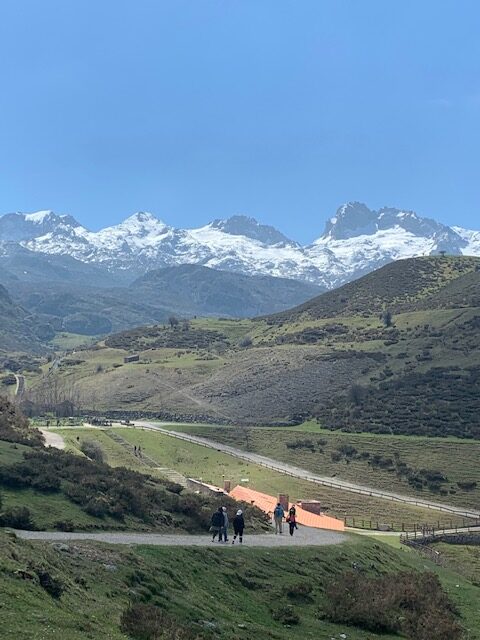



The destination is a high alpine meadow dotted with hiking trails, two alpine lakes and a restaurant. It is high in elevation but not terribly cold when the sun was out and there was no strong breeze. Being free of tall trees, we could see snow capped mountains from a distance. It was like being in the scene of The Sound of Music film except it was made better with the snow capped mountains in the background contrasting nicely with the blue sky and the green pastures.
Lake Enol and Lake Ercina are the two lakes that are between the viewpoints. There are no farms around so it truly felt like a park. The place was busy but did not feel crowded. It was the holy week (Spaniards are off from work). The mountains in the background still had snow. There was also a restaurant in the park where we had lunch. We pretty much spent the entire day here.
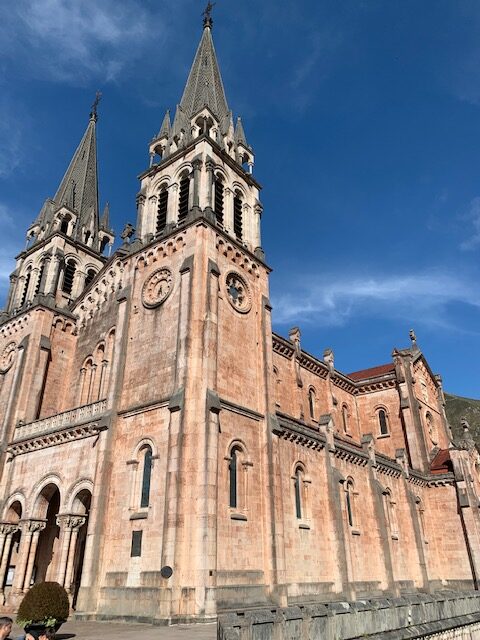

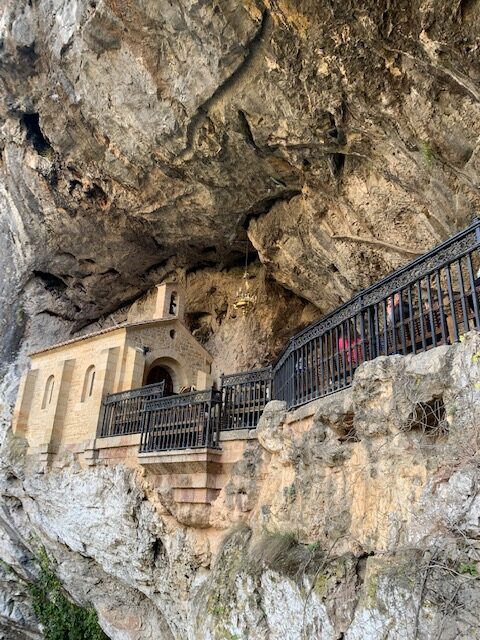

Before leaving Picos de Europa, we visited the Basilica de Santa Maria la Real de Covadonga and the Sanctuary of Covadonga. The basilica is in neo-Romanesque style, with two high towers on each side of the main entrance. The Sanctuary of Covadonga is situated in an open cave carved out on the side of the mountain. The basilica and the sanctuary are the destination of pilgrims that venerate the statue of La Santina.
When to Go
The people that work in the hotel we stayed at said that the best time to visit is October to early November. By then, the number of visitors have thinned out and the weather is cooler. The only drawback is that it could be windy.
We went in mid-April and there was still slushy snow on the mountain tops at Puente Dé. Parts of the trails were muddy and some were turning into small canals from the snowmelt. Perhaps May would have been better. It was snow free at Poncebos and Mirador Entre Lagos and the temperature was just perfect.
Summary
Picos de Europa is a national park and hidden gem tucked in Northwestern Spain. The scenery is similar to Austria and Switzerland. Towering granite, limestone and sandstone mountains and alpine scenery dominate the landscape. Outdoor activities abound in Picos de Europa from canoeing to sightseeing. There are also superb hiking trails.
Coming from the west through the town of Riaño and through Highway N-621 provides a prelude to Picos de Europa’s breathtaking scenery. The small but lively town of Potes serves as the gateway to exploring the park’s southern region. Highway CA-185 provides access to the Camaleño Valley and the Teleférico Fuente Dé which takes visitors high up in the mountain for spectacular views and hiking.
The park’s northern region is equally impressive. Hostal Poncebos makes a convenient base for exploring the northern region’s hidden gems such as quaint villages, hiking trails and hamlets.
The Mirador Entre Lagos rivals other European alpine scenery. It offers spectacular views and short walks perfect for a day of exploration. Visitors can conveniently ride the inexpensive shuttle buses from the town of Covadonga to reach this alpine playground.
Picos de Europa will be forever etched in our memories. It has all the things we love to do outdoors. And as an added bonus, it is in Spain where the people are friendly and the restaurants always have menu del dia.

